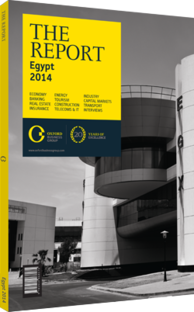Long-term projects create arable tracts from arid land
Egypt’s single biggest desert agricultural development is the New Valley Project, better known as Toshka ( strictly speaking one of New Valley’s constituent parts), which lies close to the Sudanese border to the west of the Nile, deep in Upper Egypt. Toshka, intended to be a “second Nile Valley”, covers some 200,000 acres (81,000 ha) and is irrigated by a combination of ground water and the 50-km Sheikh Zayed Canal from Lake Nasser, a reservoir on the Nile created by the Aswan High Dam. The water flow is maintained by the world’s largest pumping station. The project has had mixed progress since its inauguration in 1997 and has attracted some major investors who continue to develop their farms and whose output has a significant impact on Egypt’s agricultural sector. Some $1bn was invested between 1997 and 2008 in establishing the project. On the other hand, Toshka’s gestation has been slower than hoped, much of the area remains uncultivated, and it has yet to become a centre for urban development and industry as originally intended.
On August 30 2014, during a visit to Toshka, Prime Minister Ibrahim Mahlab announced plans to revitalise the project, 17 years after its launch. Mahlab pointed to the substantial installed infrastructure, and expressed hopes that it could become a population centre and catalyse regional development. A thorough study will be launched to reassess the project; Toshka is one of several schemes being considered by an advisory council reporting directly to President Abdel Fattah El Sisi.
Long-Term Outlook
One of the biggest investors in Toshka is Saudi-owned KADCO, a subsidiary of Saudi Arabia’s Kingdom Holding company. While acknowledging current downsides, KADCO’s CEO Daniel Leroux is bullish about the outlook for Toshka. He said that the project has partly suffered due to its association with ex-President Hosni Mubarak, being unfairly considered one of the former leaders’ vanity projects. Many local investors have also been attracted to the East Oweinat project, which generally sees less media coverage but is considerably more developed, the KADCO CEO said.
However, KADCO has never stopped investing in Toshka, even during the uncertain years that have followed Mubarak’s ouster. “While some projects are not highly profitable in the short term, long-term fundamentals are excellent,” Leroux told OBG. “By 2020, there will be 100m Egyptians, and by 2050, 150m.” Toshka has the infrastructure and government support to attract investors with a longer-term outlook.
Crop Potential
KADCO owns 25,000 feddans(equal to 1.038 acres) at Toshka, and can extend that if its projects are successful. Not all the land it currently owns is cultivatable, but it has developed 3500 feddans so far. KADCO is undertaking infrastructure expansion to increase the irrigated area by 6500 feddans, involving expanding an existing pumping station and building a new pipeline 12 km long rising 50 metres high, a project that should be complete by 2016, Leroux told OBG.
KADCO grows a diverse range of crops at Toshka, from alfalfa as livestock feed through durum wheat (often used in pasta) to grapes for export. Overall, around 50% of its output goes abroad. Leroux said that durum and alfalfa are well suited to the hot climate – and demand for alfalfa in particular is soaring. “We used to export alfalfa, but a lot of dairy expansion projects have been completed, so there is strong demand in Egypt,” said Leroux. “Danone alone has 2500 cows and there are several companies with 1000 cattle or more. Upper Egypt is very good for the crop, we can get 10 to 11 cuts of alfalfa a year, and Sudan harvests almost year-round. It also handles salinity well and is good for rotation purposes – it promotes the development of organic matter and nitrogen fixation. The next crop thus gets a better yield and needs less fertiliser.”
Leroux asserted that Egypt has strong competitive advantages in growing alfalfa – in terms of the climate, location for exports and domestic demand – but the crop has not been promoted by the authorities due to its high rate of water consumption. However, he said it is not dissimilar from that of rotating winter wheat crops with summer corn, as many Egyptian farms do.
You have reached the limit of premium articles you can view for free.
Choose from the options below to purchase print or digital editions of our Reports. You can also purchase a website subscription giving you unlimited access to all of our Reports online for 12 months.
If you have already purchased this Report or have a website subscription, please login to continue.

